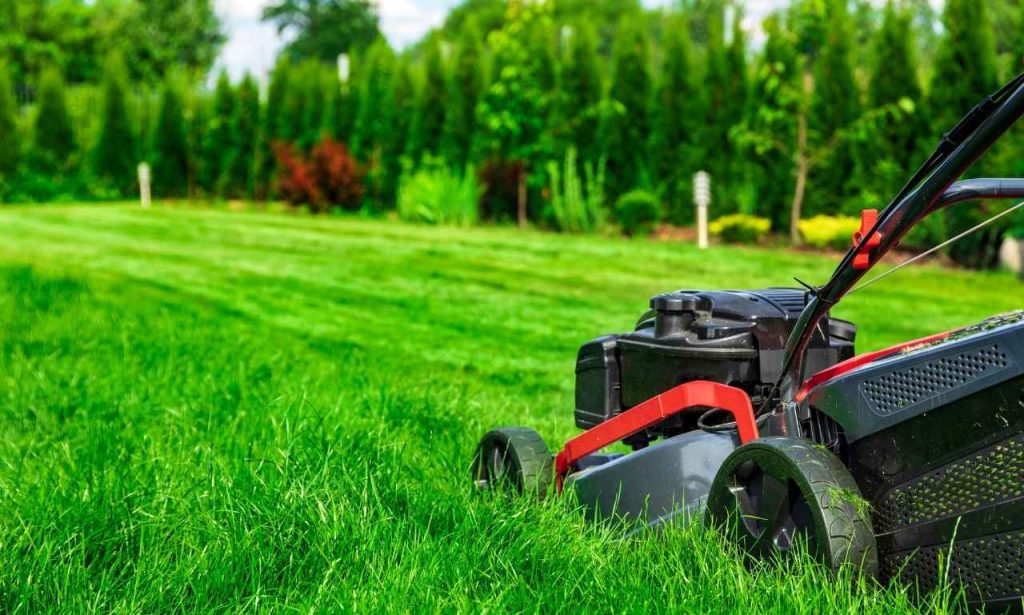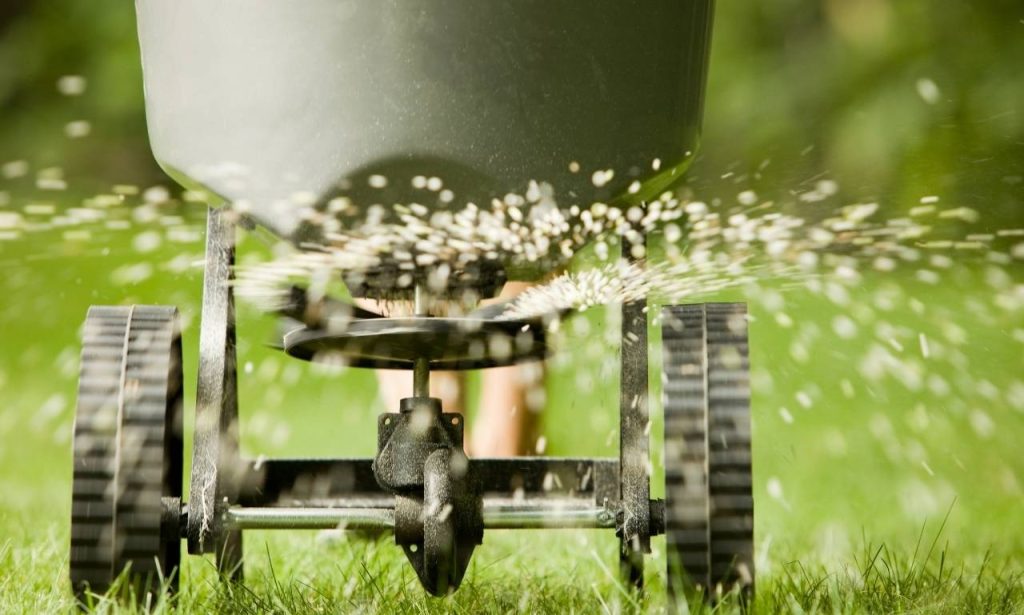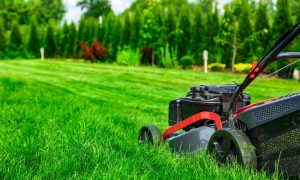Spring marks the awakening of your lawn after its winter slumber. Your grass needs special attention during this critical season. Proper care now sets the foundation for a vibrant lawn throughout the summer months. Many homeowners rush into mowing without adequately preparing their yards. Taking time for proper spring maintenance prevents problems later in the growing season. My neighbor Tom learned this lesson after skipping spring care last year. His yard suffered all summer, while mine thrived with just a few weekend work sessions. This guide covers essential spring care tips for a healthy yard that will make your neighbors green with envy.
Assess Your Lawn’s Condition

Walking your property reveals a lot about your lawn’s health after winter. Look for areas of discoloration, thinning, or bare patches that need special attention. Snow mold often appears as matted areas with a grayish tinge in regions with heavy snowfall. Check for signs of pest damage, like irregular brown patches or tiny holes throughout the yard. Water pooling indicates drainage issues that should be addressed before the growing season kicks into high gear.
The soil itself tells an important story about your lawn’s potential health. Grab a handful of soil and observe its texture and moisture content. Different grass types have unique needs based on your local climate and soil conditions. My lawn suffered from clay soil until I amended it gradually each spring with compost. Testing your soil pH provides essential information about potential nutrient availability to your grass plants. Home testing kits work well enough, though lab tests give more detailed results about specific nutrient levels.
Clean Up Debris
Clearing away dead leaves, branches, and other winter debris allows sunlight to reach the soil. Matted grass suffocates under debris and becomes more disease-resistant in the coming months. Rake gently to avoid damaging new growth emerging from winter dormancy. Dead grass should be removed since it contributes to thatch buildup over time.
A flexible leaf rake works better than rigid options for this spring cleaning task. I prefer morning cleanup sessions before the spring winds kick up in my neighborhood. Removing pet waste prevents nitrogen burn spots that can permanently damage your grass. Check for foreign objects like rocks, toys, or misplaced garden tools hiding in the grass. When you start cutting later in the season, these objects can damage your mower blades.
Aerate the Soil
Soil compaction prevents air, water, and nutrients from effectively reaching grass roots. Aeration involves creating small holes throughout your lawn to relieve this compaction issue. The process encourages deeper root growth and helps break down thatch buildup naturally. Increased oxygen flow to the root zone stimulates beneficial microbial activity in your soil.
Several aeration methods exist, from simple spike aerators to more effective core aerators. Core aeration removes actual plugs of soil, creating better channels for resources to reach roots. These soil plugs should be left on the lawn to break down naturally over time. The sight of these soil plugs scattered across your lawn might look messy initially. They typically disappear within two weeks as they break down and return nutrients to the soil.
When is the best time to aerate the lawn?
The ideal aeration timing depends on your grass type and local climate conditions. Cool-season grasses benefit most from aeration during early spring or fall growth periods. Warm-season grasses should be aerated in late spring when they enter their active growth phase. Soil moisture significantly impacts aeration effectiveness and the ease of performing the task properly.
When you plan to aerate, the ground should be moist but not soggy. Trying to aerate bone-dry soil often results in inadequate penetration and poor results. Wait until after a rainfall or water the lawn lightly the day before aerating. Many local hardware stores rent professional-grade aerators for weekend use at reasonable rates. My neighborhood has started a tool-sharing program where we split the rental cost each spring.
Filling Bare or Thin Lawn Areas
Patchy lawns need special attention to fill in consistently throughout the growing area. Options include seeding, sodding, or using specialized patching products for smaller areas. The right choice depends on your budget, timeline, and the size of the area needing repair. New grass establishment requires consistent moisture and protection from foot traffic.
Seeds need good soil contact to germinate successfully in bare areas of your lawn. Lightly raking the soil surface before spreading seed significantly improves germination rates. Covering newly seeded spots with a thin layer of compost helps retain moisture during the critical establishment phase. Birds often eat freshly spread grass seed unless you protect it properly.
How to Install Sod Efficiently?
Sod offers instant lawn coverage but requires proper installation for successful establishment. Prepare the soil thoroughly by removing old grass and loosening the top few inches. Level the area carefully before laying sod to prevent bumps and dips in your finished lawn. Stagger the sod pieces like brick patterns to prevent obvious seam lines in your new lawn.
Tight seams between sod pieces prevent edges from drying out during the establishment period. Roll the newly installed sod to ensure good soil contact for faster root development. Water immediately after installation until the soil beneath becomes thoroughly moist. Daily watering for the first two weeks helps new sod establish firm roots in your yard. My cousin transformed his yard in a weekend with sod after years of fighting patchy grass.
Overseeding
Overseeding introduces new grass varieties to thicken existing lawns without starting over completely. This process improves lawn density and can introduce more resilient grass types. The best grass seed blends contain multiple varieties for disease resistance and adaptability. Seed-to-soil contact remains essential even when overseeding established lawns.
Mow your existing grass shorter than usual before overseeding for better results. Dethatching or light raking helps seeds reach the soil instead of getting trapped in thatch. Water lightly but frequently after overseeding to encourage fast germination. Avoid applying weed preventers when overseeding since they prevent all seeds from sprouting properly.
Fertilize Appropriately

Spring fertilization provides essential nutrients for strong early-season growth. Different grass types need different nutrient ratios for optimal health and appearance. Slow-release fertilizers provide steady nutrition without the risk of burning your lawn. Organic options build soil health while feeding your grass more naturally.
Too much fertilizer can damage your lawn and contribute to water pollution. Following the package directions precisely prevents over-application and potential grass damage. The fertilizer spreader setting greatly affects application evenness across your lawn. Slightly overlapping your passes ensures complete coverage without creating streaks or missed spots.
Timing Your Fertilizer Application
Fertilizer timing depends mainly on your grass type and local growing conditions. Cool-season grasses often benefit from light spring feeding followed by heavier fall applications. Warm-season grasses typically need their main fertilizer application in late spring. Soil temperature matters more than the calendar date when deciding when to fertilize.
Fertilizing too early wastes nutrients before the grass can use them actively. Wait until your lawn has greened up and started actively growing before fertilizing. Early-morning application allows fertilizer to dry on grass blades before evening moisture. My grandfather always checked the soil temperature before applying his spring fertilizer, regardless of what the calendar said.
Weed Control
Spring brings rapid weed growth that competes with your desirable grass plants. A multi-pronged approach works best for season-long weed management in most lawns. The healthier your lawn grows, the fewer opportunities weeds find to establish themselves. Identifying common weeds in your area helps target control methods more effectively.
How to Stop Weeds Before They Start? Apply Pre-Emergent Herbicides
Pre-emergent herbicides create a barrier that prevents weed seeds from sprouting successfully. Timing is critical for pre-emergent applications to work effectively against seasonal weeds. Crabgrass preventers should be applied before soil temperatures consistently reach 55°F. These products stop cell division in germinating seeds rather than killing existing weeds.
Following label directions precisely ensures effectiveness and lawn safety. Pre-emergents must be watered in lightly to activate the protective barrier they create. Different products control different weed species, so match your choice to local weed pressures. In some climates, most pre-emergents remain effective for 6-8 weeks before needing reapplication.
Manual Weed Removal for a Natural Approach
Hand-pulling works well for sporadic weeds without requiring chemical applications. Weeds pull easiest from moist soil after rainfall or morning watering. Getting the entire root prevents many weeds from growing back almost immediately. Special weeding tools make the removal of deep-rooted weeds much easier on your back.
Some gardeners use boiling water or vinegar solutions for natural weed control. Spot-treating weeds preserves surrounding grass while targeting problem plants specifically. Manual removal is best when weeds remain small and haven’t set seed. Regular inspection catches new weeds before they become established and harder to control.
Combining Strategies for Effective Pest Control
Integrated pest management combines multiple approaches for comprehensive lawn protection. Cultural practices like proper mowing height naturally discourage many lawn pests. Beneficial nematodes offer biological control for grubs and other soil-dwelling lawn pests. Targeted treatments work better than broadcast applications for most lawn pest issues.
Knowing pest life cycles helps time control measures for maximum effectiveness. Early identification prevents minor pest problems from becoming major lawn disasters. My approach involves weekly lawn inspections throughout the spring to catch problems early. Many pest issues can be resolved naturally if your lawn stays healthy through proper maintenance.
When and How to Start Mowing in Spring
The first mow sets the stage for your entire lawn care season. Proper timing prevents damage to tender new grass growth emerging after winter. Your mower needs thorough maintenance before the first cutting session of spring. Sharp blades make clean cuts that heal quickly without stressing grass plants.
The Importance of Mower Maintenance
Clean air filters improve engine performance and fuel efficiency significantly. Changing the oil annually keeps your mower running smoothly all season long. Spark plug replacement ensures easy starting and complete fuel combustion. Blade sharpening prevents the torn grass that invites disease into your lawn.
Battery-powered mowers need different maintenance than gas models each spring. Check wheel adjustments to ensure even cutting height across your entire lawn. My mower maintenance routine includes cleaning the deck thoroughly before the first use. This simple step prevents old grass clippings from contaminating your fresh spring lawn.
Mowing Height for Healthy Grass
Proper cutting height encourages more profound root development and drought resistance. Most cool-season grasses thrive between 2.5 and 3.5 inches during the spring months. Warm-season varieties generally prefer slightly lower heights, around 2 inches. Never remove over one-third of the grass blade length in a single mowing.
Taller grass shades soil, preventing many weed seeds from germinating successfully. Different areas of your lawn might need different heights based on sun exposure. Gradually raising mowing height as summer approaches helps prepare the grass for heat stress. The old “cut it short” approach weakens grass and invites weeds and disease.
Timing Your First Mow
Wait until your grass reaches about 3 inches before the first cut of spring. Mowing wet grass leads to clumping, uneven cuts, and potential disease spread. Mid-morning offers ideal timing after dew has dried but before the afternoon heat. The first mowing should remove just a small growth, not scalp the lawn.
Check your specific grass type’s recommendations for appropriate spring mowing practices. Early spring mowing helps remove winter debris missed during initial cleanup efforts. Your first mow reveals issues requiring attention before the growing season advances further. I always mow in a different pattern to prevent soil compaction from wheel tracks.
How to Assess Your Lawn’s Watering Needs
Spring irrigation requirements change constantly with weather conditions. Most established lawns need about 1-1.5 inches of water weekly, including rainfall. Soil type dramatically impacts water retention and frequency needs in your specific yard. Sandy soils require more frequent watering than clay soil in most situations.
Signs of drought stress include a bluish-gray color and footprints remaining visible after walking. Inexpensive rain gauges help track natural precipitation amounts each week. Different lawn zones often have different watering requirements based on exposure and slope. My lawn needs less supplemental water in shaded northern sections than in full-sun areas.
Watering Techniques for Healthy Grass
Early morning watering significantly reduces evaporation and disease pressure. Deep, infrequent irrigation encourages more profound root growth and drought tolerance. Sprinkler system inspection ensures even coverage without waste or dry spots. Adjusting sprinkler heads prevents watering sidewalks, driveways, and other non-lawn areas.
Oscillating sprinklers work well for rectangular lawn areas with consistent coverage. Impact sprinklers provide better results for larger or irregularly shaped lawn sections. Smart irrigation controllers automatically adjust watering based on weather conditions. Hand watering remains best for small problem areas needing extra attention during spring.
Special Considerations for Spring
Late frost can damage newly emerging grass blades in some regions. Leaving the grass slightly longer provides some protection against unexpected cold snaps. Heavily shaded areas need different management than full-sun sections of your lawn. Areas under trees compete with tree roots for available water and nutrients.
Kids and pets introduce unique challenges to spring lawn establishment efforts. Creating designated play areas preserves more sensitive sections of your emerging lawn. Stepping stones benefit high-traffic pathways and prevent worn grass areas. Spring lawn care timing should account for local climate patterns and typical last frost dates.
Edge and Define Lawn Borders

Clean edges create definition between lawn and garden beds or pathways. Regular edging prevents grass from invading gardens and landscaped areas. Several tool options exist, from manual edgers to power equipment for more significant properties. The depth of edging trenches affects both appearance and maintenance frequency.
Removing grass completely from edged areas prevents rapid regrowth into beds. Adding physical barriers like plastic edging provides longer-lasting separation. Spring represents the perfect time to redefine edges that disappeared over winter. Simply refreshing the lawn edges each spring makes my property look dramatically more maintained.
Conclusion
Spring lawn care sets the foundation for year-round lawn health and beauty. Small efforts now prevent significant problems during summer stress periods. Consistent maintenance routines build naturally resistant turf over successive seasons. With proper seasonal care, your lawn becomes an extension of your home.
Take time to understand your lawn’s needs rather than following generic advice. Regional differences dramatically impact best practices for spring lawn maintenance. The investment of spring weekends returns dividends through the summer enjoyment of your outdoor spaces. Nothing compares to the satisfaction of a well-maintained lawn that responds to proper care.
Also Read: How to Create Your Dream Backyard
FAQs
Begin when soil temperatures reach about 50°F and the ground isn’t frozen or waterlogged.
No, leave short clippings to decompose and return nutrients to the soil.
If water pools on the surface or the soil feels hard and compacted, aeration will help.
No, pre-emergents, including your new grass seed, prevent all seeds from germinating.
Water deeply enough to moisten the soil 6 inches down, usually 30-45 minutes per section.



